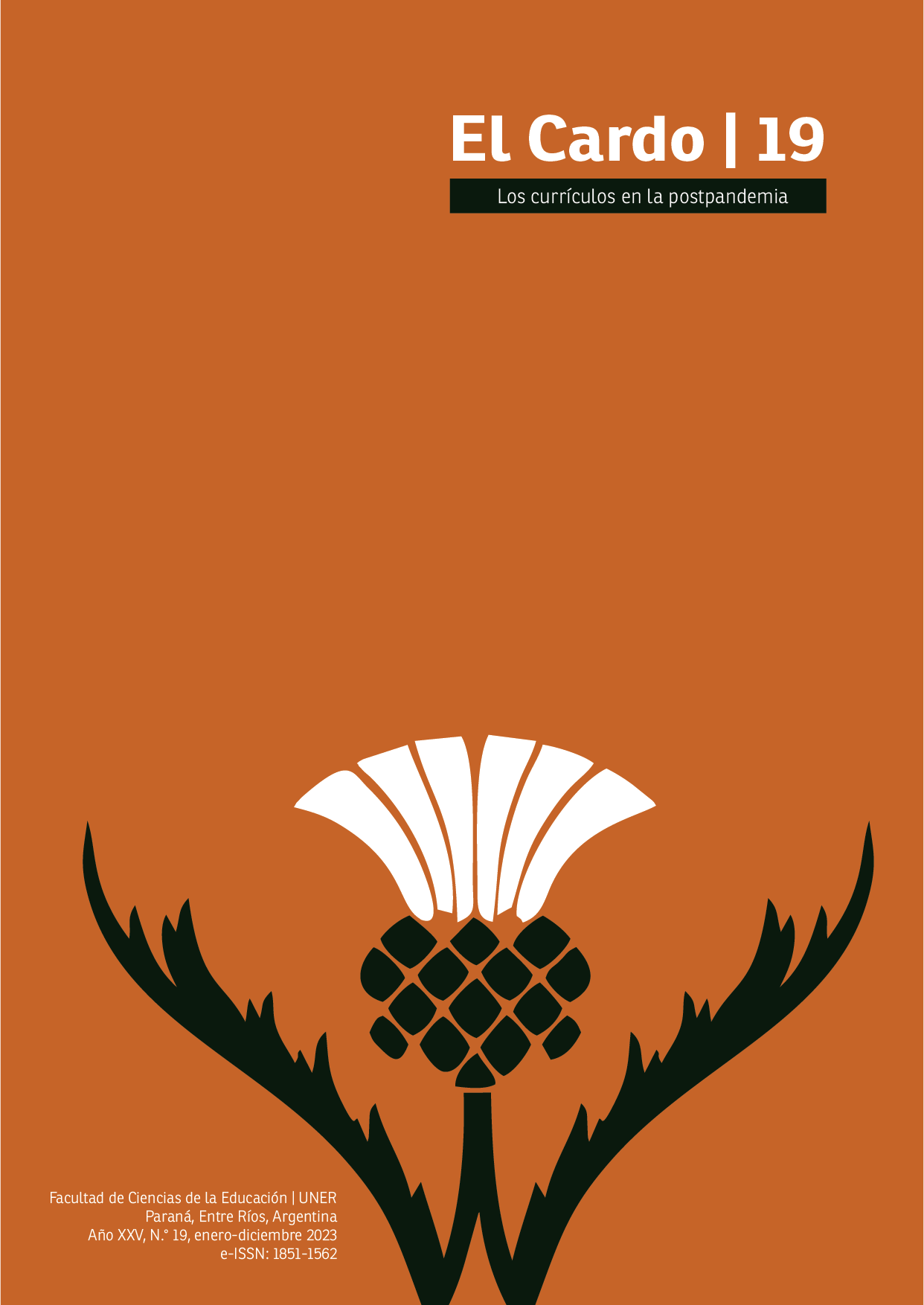Del texto escrito al presente postpandemia: nada volverá a ser como antes
Contenido principal del artículo
Resumen
La pandemia de COVID-19 modificó las estructuras de las relaciones económicas, sociales, culturales, educativas; por mencionar solo algunas de las estructuras que organizan la vida cotidiana de las personas. Resulta clave el segmento temporal comprendido entre los años 2020-2022 al momento de construir y producir textos, saberes, discursos en torno al currículum, la didáctica, la enseñanza en este contexto pospandemia. Es (casi) irrefutable concebir a este fenómeno como una irrupción que se dio en todos los ámbitos y se coló por cada quebradura que se abría a su paso. Nada volverá a ser como antes es un imperativo que circula en este presente al que reconocemos como pospandemia. Advertir algunos pasajes que se dan del texto escrito (curricular) a las circunstancias institucionales educativas del presente nos permite percibir algunos desafíos actuales y evocar algunas orientaciones sobre lecturas y miradas en esta contingencia.
La pandemia, como rasgo disruptivo dislocante, y a posteriori los efectos pospandemia, están planteando un escenario en el que se dan por acabadas las instituciones del Estado. Esta vacuidad del significante por parte de los discursos hegemónicos es una preocupación, pues remite al acabose de la escuela como institución pública que articula lo común y en ello, al currículum como texto que representa lo común. Retomar el significante pospandemia y otorgarle sentidos incesantemente, reconocer las tramas discursivas y los juegos del lenguaje que lo constituyen en cada escenario particular donde dejó su rastro, ayudará a leer mejor las circunstancias del presente. Traducir el texto curricular en los escenarios educativos escolares de pospandemia exige dar sentidos políticos, identitarios, locales, internacionales a los discursos curriculares que allí se traman.
Descargas
Métricas
Detalles del artículo

Esta obra está bajo una licencia internacional Creative Commons Atribución-NoComercial-CompartirIgual 4.0.
Citas
Carlachiani, C. (2021). Escuelas secundarias inclusivas. Una lectura curricular poscrítica. Teseo.
Casimiro Lopes, A.; Rodrigues da Cunha, E. y Camilo Costa, H. (2013). De la recontextualización a la traducción: Investigando políticas de currículum. Currículo sem Fronteiras 13(3), 392-410.
Cullen, C. (1997). Crítica de las razones de educar. Paidós.
De Alba, A. (1995). Currículum: Crisis, Mito y Perspectiva. Miño y Dávila Editores.
De Alba, A. (2007). Currículum-sociedad. El peso de la incertidumbre, la fuerza de la imaginación. IISUE Educación- Plaza y Valdés Editores.
De Alba, A. y Casimiro Lopes, A. (2015) (Coord.). Diálogos curriculares entre México y Brasil. IISUE.
Laclau, E. (2005). La razón populista. Fondo de Cultura Económica.
Laclau, E. (2014). Los fundamentos retóricos de la sociedad. Fondo de Cultura Económica.
Laclau, E. y Mouffe, C. (2004). Hegemonía y estrategia socialista. Hacia una radicalización de la democracia. Fondo de Cultura Económica.
Morelli, S. (2016) (coord.). Núcleos Interdisciplinarios de Contenidos nic. La educación en acontecimientos. Homo Sapiens.
Morelli, S. (2017). Discurso e política como linguagem para o currículo: a contribuição de Chantal Mouffe para investigação da Educação Básica na Argentina en Casimiro Lopes, A. y Oliveira, M. (Organizadoras). Políticas de Currículo: pesquisas e articulações discursivas. Editora CRV.





